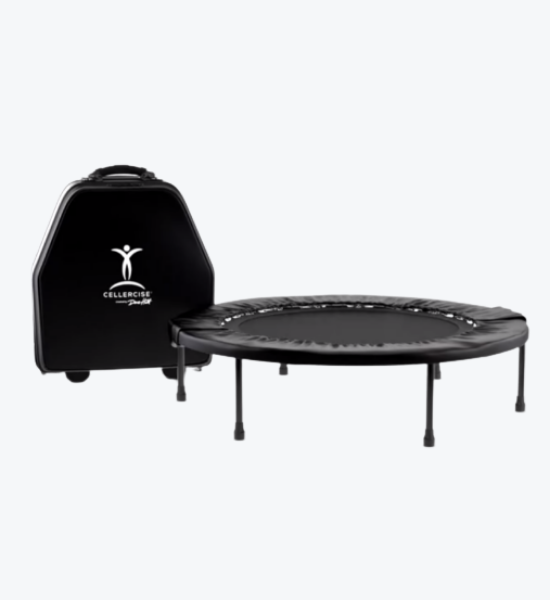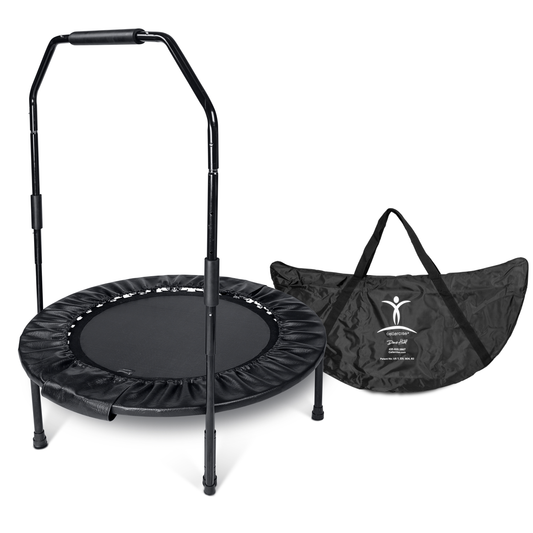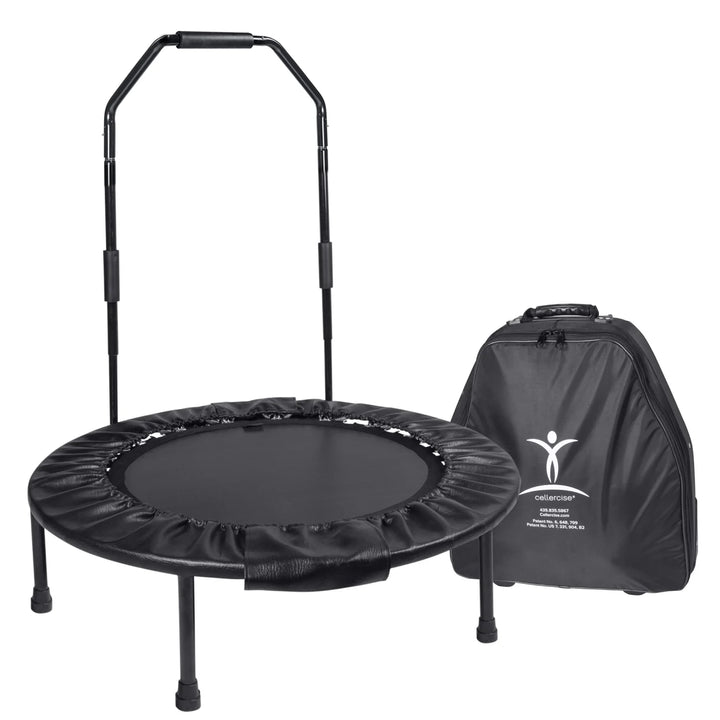Does Rebounding Help Pelvic Floor Muscles?
Disclaimer: This Blog/Web Site is made available by the publisher for educational purposes only as well as to give general information & understanding regarding the industry. It is not to be used as specific medical advice or to replace consulting with your doctor. You should always consult with your doctor. By using this Blog / Web Site you understand that this Blog/Web Site should not be used as a substitute for medical advice from a licensed professional. For our full disclaimer, please read: Cellercise® Disclaimer
Rebounding is a popular form of low impact aerobic exercise with many different benefits for people of all ages, shapes, and athletic ability. While most people who enjoy rebounder exercises know that they can strengthen the muscles of their abdominal core, legs, back, and buttocks while they improve their balance and lung function, rebounding offers many other benefits that often go overlooked. One of the most important benefits of rebounding is pelvic floor strengthening.
Using your rebounder, pelvic floor muscles can become stronger. The muscles of the pelvic floor support the bladder and bowels, and in women they support the reproductive organs and promote sexual health. While several exercises exist for improving pelvic floor strength, few are as easy, accessible, and enjoyable as using a mini trampoline. Pelvic floor health is important for many reasons. If you have concerns about your own pelvic floor muscles, consider investing in a mini trampoline.
Why Is Pelvic Floor Health Important?
In men, the muscles of the pelvic floor run like a hammock between the tailbone and the base of the pubic bone, supporting the bowels and bladder. In women, the pelvic floor muscles support the reproductive organs as well. One of the most common issues facing women when it comes to the pelvic floor muscles is stress incontinence. This issue is particularly common among older women and women who have had children. Stress incontinence can cause bladder leakage when the pelvic area experiences stress or pressure. In some cases, even coughing or sneezing can lead to leakage.
Aside from preventing or treating stress incontinence, there are several other benefits to working out and targeting the pelvic floor muscles. Stronger pelvic floor muscles will not only improve bowel and bladder control but also reduce the risk of prolapse, increase sexual sensation, and improve social confidence. In men, pelvic floor exercises can help during recovery from prostate surgery, and in women, these exercises can help with recovery from gynecological surgeries and childbirth.
Pelvic floor exercises don’t need to be intense workouts. In fact, high-impact workouts can stress the pelvic floor muscles too much and lead to the very symptoms you’re attempting to improve, such as bladder leakage from a weak pelvic floor. It’s important to know how to use your rebounder for pelvic floor strengthening the right way and develop an individualized workout plan.
Boosting Pelvic Floor Strength With Rebounding
One of the best methods of addressing stress incontinence and preventing prolapse is strengthening the muscles of the pelvic floor. While high impact rebounding may cause too much stress on these muscles, lighter rebounding can be very effective. During low impact rebounding, pelvic floor muscles experience repeated light stress. Over time, this strengthens them, which can diminish the symptoms of stress incontinence and enhance the effectiveness of other pelvic floor exercises.
A common frustration among those struggling with weakened pelvic floor muscles is that the exercises deemed best for strengthening those muscles often stress the pelvic area to the point of causing the symptoms they wanted to avoid in the first place. Like any other type of workout, it is essential to take rebounding slowly and work up intensity gradually over time.
If you have concerns about your pelvic floor muscle strength and want to try rebounding, be sure to speak with your doctor for suggestions about your best workout path. Your doctor can advise you as to what milestones you should track, exercises to focus on, and exercises to avoid when you want to strengthen your pelvic floor muscles
David Hall, owner of Cellerciser®, is confident in the Cellerciser®’s ability to improve pelvic floor strength:
“One technique for the pelvic floor involves sitting down on the Cellerciser®, supporting the back with both hands, tilting backwards slightly to cause the lower abs to tighten, and then bouncing up and down. This simple exercise offers less stress and more support for the pelvic floor area and helps build up tissue surrounding it. This exercise is especially helpful to women who have had several pregnancies, who are pregnant, or who are recovering from pregnancy to restore strength in the pelvic area. There are several graduated movements designed to target the pelvic region.”
How Does Rebounding Improve Overall Health?
When it comes to your mini trampoline, pelvic floor strengthening is just one of the many possible benefits of using it frequently. Most people benefit from just ten minutes of rebounding exercise each day, but some people may need to limit their sessions to two to five minutes at a time. It’s also possible to extend your rebounding session time as your muscles strengthen and you become more comfortable with the exercise.
After a few rebounding sessions, you may start experiencing much more than just strengthened pelvic floor muscles. Rebounding is a unique form of exercise that acts upon the lymphatic system in a way that no other exercise can. The bouncing motion changes the way gravity acts on the body, causing a sensation of weightlessness with each jump. This is more than just good fun; this feeling of weightlessness activates the lymphatic system, kicking into high gear and increasing fluid movement throughout the body.
The lymphatic system is an essential waste removal path for the body. This system collects waste materials such as excess lactic acid, bacteria, and dead cells and excretes it through the skin by sweating. As you work out on your rebounder, pelvic floor muscles strengthen as your lymphatic system pushes toxins out of your body at a higher rate. Additionally, this bouncing motion also encourages red bone marrow performance, encouraging stronger white blood cell production and a higher white blood cell count that may last up to an hour after exercising.
Improved lymphatic system function and a higher white blood cell count are fantastic defenses against illness and infection, making it less likely you’ll get sick and easier to overcome sickness if you do fall ill. Additionally, rebounding is gentle enough that you should be able to manage a quick two to three-minute session even if you’re feeling under the weather, giving your immune system a much-needed boost at the best possible time.
Add Rebounding to Your Workout
Rebounding is simple to start; all you need is a mini trampoline. Pelvic floor strengthening is just one of the many benefits you will enjoy with consistent rebounding exercise. Depending on your overall health and ability level, you should be able to start with five to ten-minute sessions and then gradually increase your session time and session frequency to get the workout you want. Some people prefer to make rebounding their warmup and/or cooldown exercise everyday, but it’s fun and easy enough that you may want to hop on your rebounder for a few minutes at a time several times throughout the day.
If you have struggled with pelvic floor-related health problems, a rebounder could be an effective solution that improves your symptoms and restores your confidence. Remember that this article is not medical advice and it should not be interpreted as intended to treat any specific medical issue. If you have concerns about the health of your pelvic floor, always consult your physician before starting any new type of exercise.
NOTE: Remember to always consult with your doctor or health professional before starting new exercise routines.
Get Your Cellerciser® and start rebounding today!














